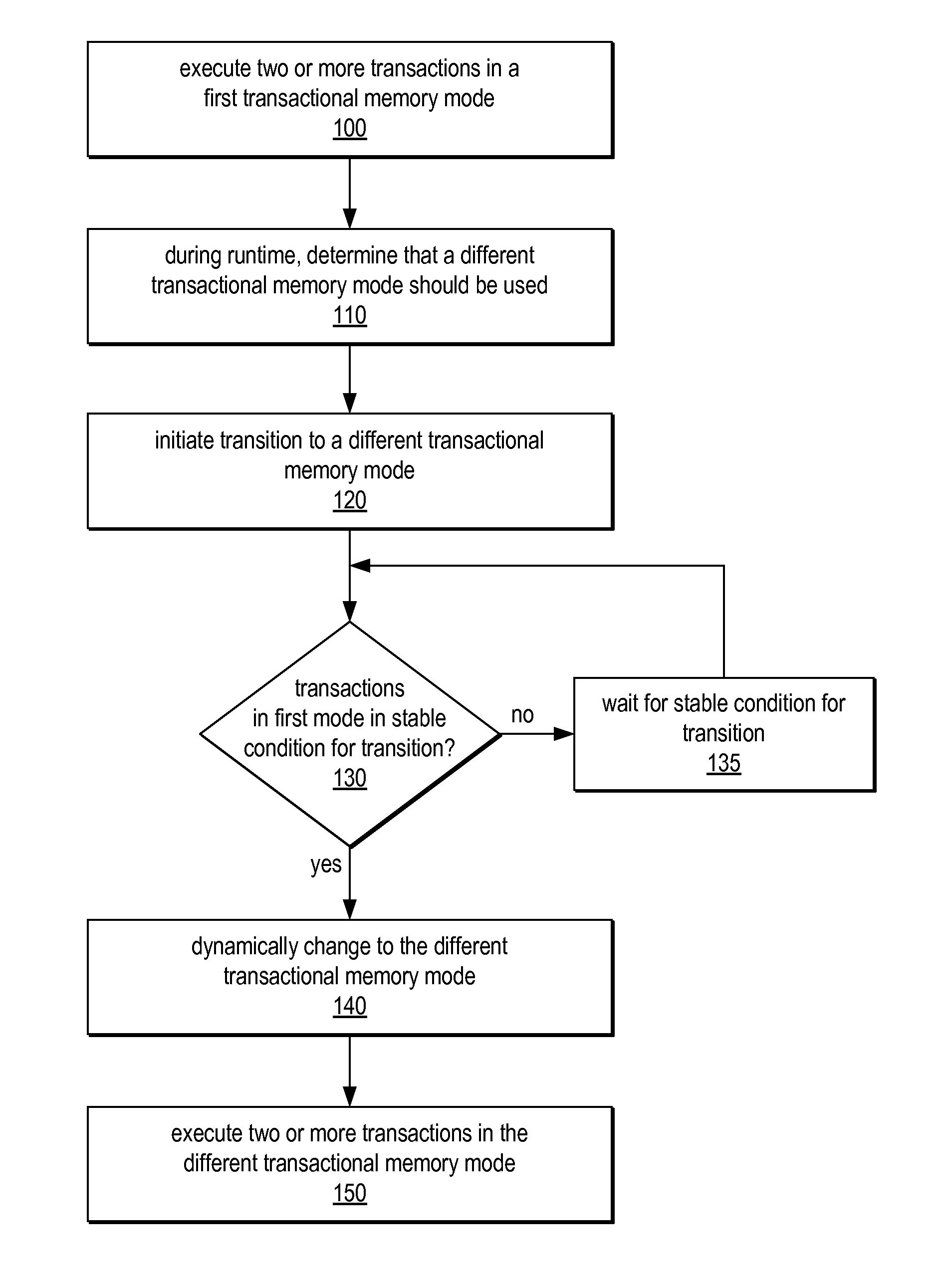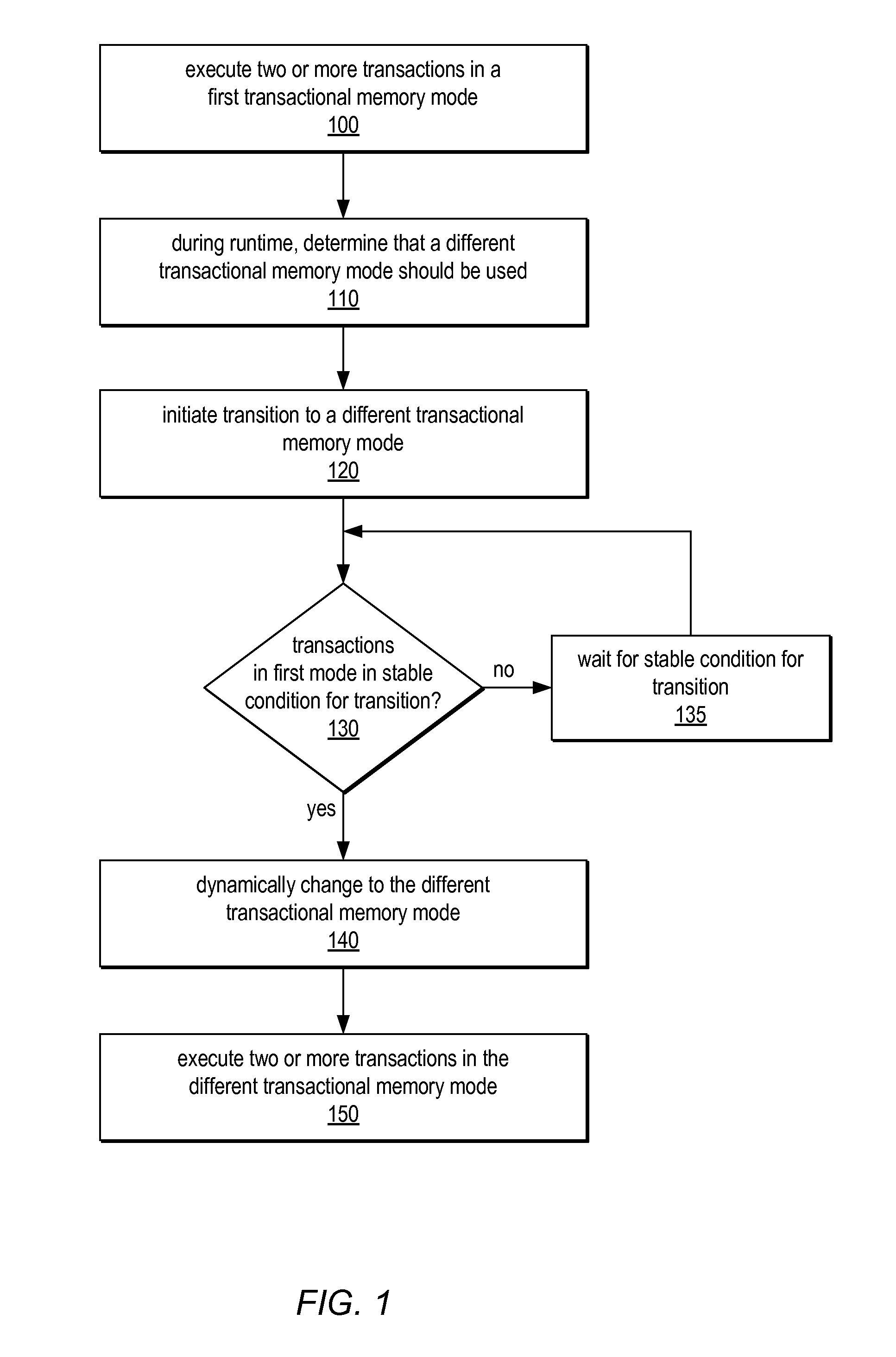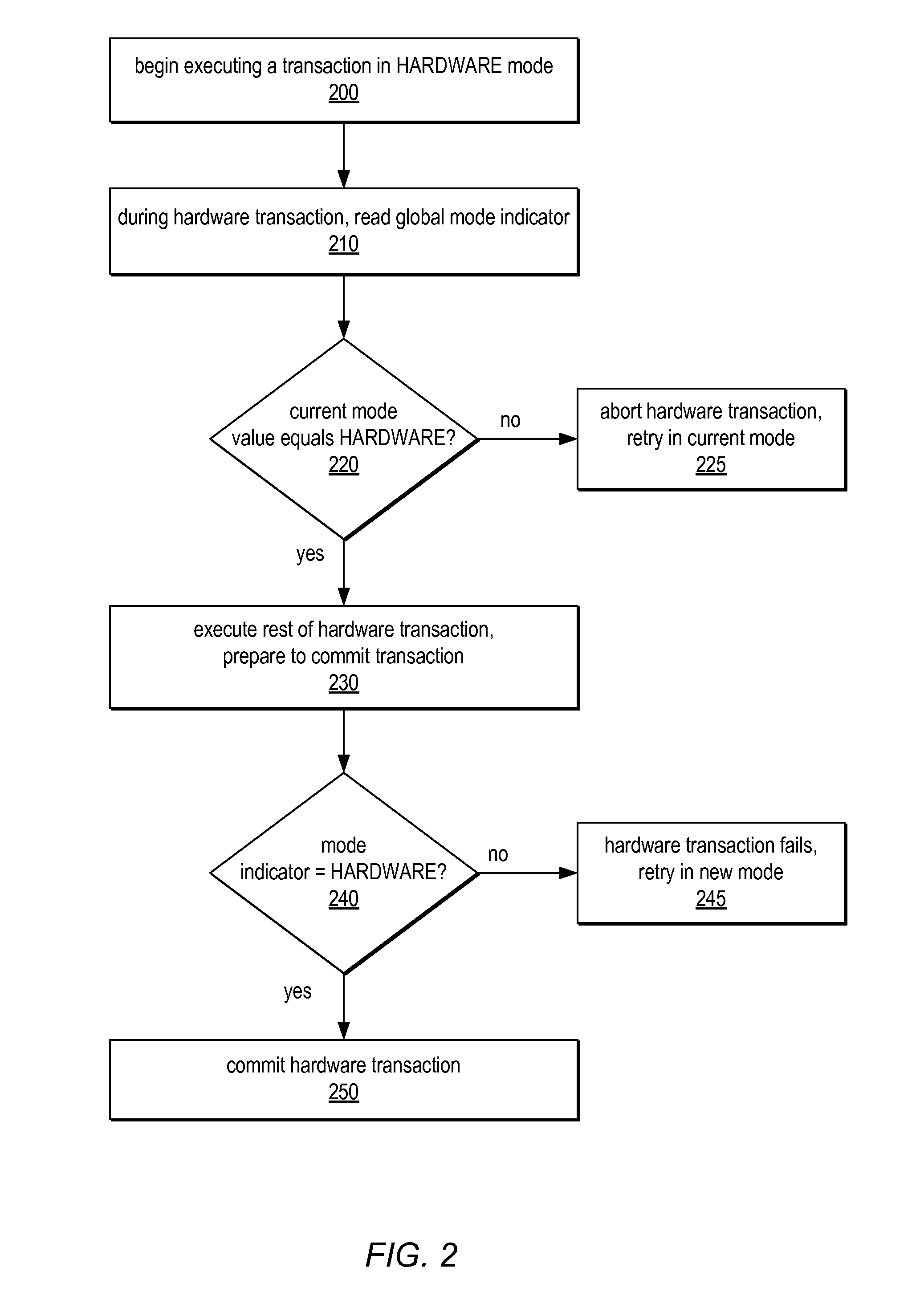System and Method for Supporting Phased Transactional Memory Modes
a transactional memory and transaction mode technology, applied in the field of system and method for supporting phased transactional memory modes, can solve the problems of insufficient composition of locks and condition variables, extreme difficulty in reasoning about the interactions of concurrent threads, and inability to write correct concurrent programs, etc., to achieve the effect of reducing the difficulty of writing correct concurrent programs
- Summary
- Abstract
- Description
- Claims
- Application Information
AI Technical Summary
Benefits of technology
Problems solved by technology
Method used
Image
Examples
Embodiment Construction
[0023]Transactional memory is widely considered to be the most promising avenue for addressing issues facing concurrent programming and execution. Using transactional memory, programmers may specify what should be done atomically, rather than how this atomicity should be achieved. The transactional memory implementation may then be responsible for guaranteeing the atomicity, largely relieving programmers of the above-mentioned complexity, tradeoffs, and software engineering problems. As noted above, transactional memory may be implemented in hardware, in software, or in a combination of the two, in various embodiments. Hardware transactional memory (HTM) designs may be characterized as unbounded, bounded, or “best-effort” implementations. For example, a bounded HTM may have a fixed-size, fully associative transactional cache, and a transaction may be committed if and only if it fits in that cache. Alternative “best-effort” designs may piggyback on existing caches and other hardware ...
PUM
 Login to View More
Login to View More Abstract
Description
Claims
Application Information
 Login to View More
Login to View More - R&D
- Intellectual Property
- Life Sciences
- Materials
- Tech Scout
- Unparalleled Data Quality
- Higher Quality Content
- 60% Fewer Hallucinations
Browse by: Latest US Patents, China's latest patents, Technical Efficacy Thesaurus, Application Domain, Technology Topic, Popular Technical Reports.
© 2025 PatSnap. All rights reserved.Legal|Privacy policy|Modern Slavery Act Transparency Statement|Sitemap|About US| Contact US: help@patsnap.com



